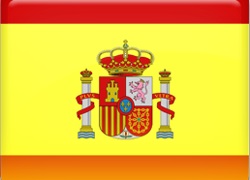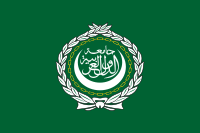Crowds in Nairobi panicked after police fired tear gas and gunshots during the public viewing of former Prime Minister Raila Odinga’s body. Several were injured. Odinga, a longtime opposition leader, will have a state funeral, with public viewings in Nairobi and Kisumu before burial in Bondo. A seven-day mourning period has been declared.
Kenya police use gunshots and tear gas to disperse crowds at former PM Odinga’s public viewing


Huge crowds of mourners in Kenya fled in panic after police fired gunshots and deployed tear gas at a stadium where they had gathered to pay their respects to the late former Prime Minister Raila Odinga. Several people at the venue in the capital, Nairobi, were reportedly injured as security personnel tried to control the surging crowds. It remains unclear whether the police used live ammunition or rubber bullets.
Odinga’s body had been flown back from India, where he passed away on Wednesday morning. Thousands of supporters had earlier traveled to the country’s main airport to receive the coffin in a massive outpouring of grief, which briefly disrupted flights. Authorities explained that mourners had accessed restricted areas, leading to a “precautionary closure” lasting around two hours.
From the airport, a procession of thousands moved to escort the vehicle carrying Odinga’s body to the stadium, approximately 10 kilometers (six miles) from the city center. Due to the unexpectedly large turnout, the public viewing was relocated to Nairobi’s Moi International Sports Centre in Kasarani, rather than the parliament building, which had been the original venue. The convoy arrived to a packed stadium, with even more people waiting outside.
Shortly after, a large crowd broke through a gate in the arena, prompting police to fire tear gas. Mourners rushed toward the exits in panic. A BBC reporter at the scene also witnessed men in civilian clothing striking protesters with batons. According to the AFP news agency, at least three people were visibly injured, including one with a serious head wound.
Once order was restored, government officials and dignitaries were able to observe the coffin, and public viewing began later in the evening. Earlier, streams of supporters had gathered at Lee Funeral Home, where the body was initially expected, and around the parliament area.
“I came here at six in the morning. We have been at the airport to welcome Baba [Odinga’s nickname],” one mourner told the BBC near the airport. “We are sad, we have been left as orphans. He is our father.” Motorcycle rider William Otieno Adoyo described himself as a “Baba die-hard” and said, “We want to see Baba, how do we know it’s him in the casket? Let them show us and we’ll be contented.”
Mourners carried twigs and palm branches, a traditional symbol of grief among the Luo ethnic group, to which Odinga belonged. The state funeral is scheduled at Nyayo National Stadium in Nairobi on Friday, after which his body will be transported to Kisumu, a western city on the shores of Lake Victoria and a stronghold of his political influence. Members of the public will have another opportunity to view the body before the burial on Sunday at his farm in Bondo, about 60 kilometers west of Kisumu. According to the family, it was Odinga’s wish to be laid to rest as quickly as possible, ideally within 72 hours.
The 80-year-old former prime minister collapsed during a morning walk in India on Wednesday and was taken to Devamatha Hospital, located roughly 50 kilometers (30 miles) east of the port city of Kochi. A seven-day mourning period has been declared, and Odinga will be accorded a state funeral with full military honors, according to Kenyan President William Ruto. Odinga was a towering figure in Kenyan politics, serving for many years as the main opposition leader and contesting five presidential campaigns, the most recent three years ago.

 বাংলা
বাংলা  Spanish
Spanish  Arabic
Arabic  French
French  Chinese
Chinese 
